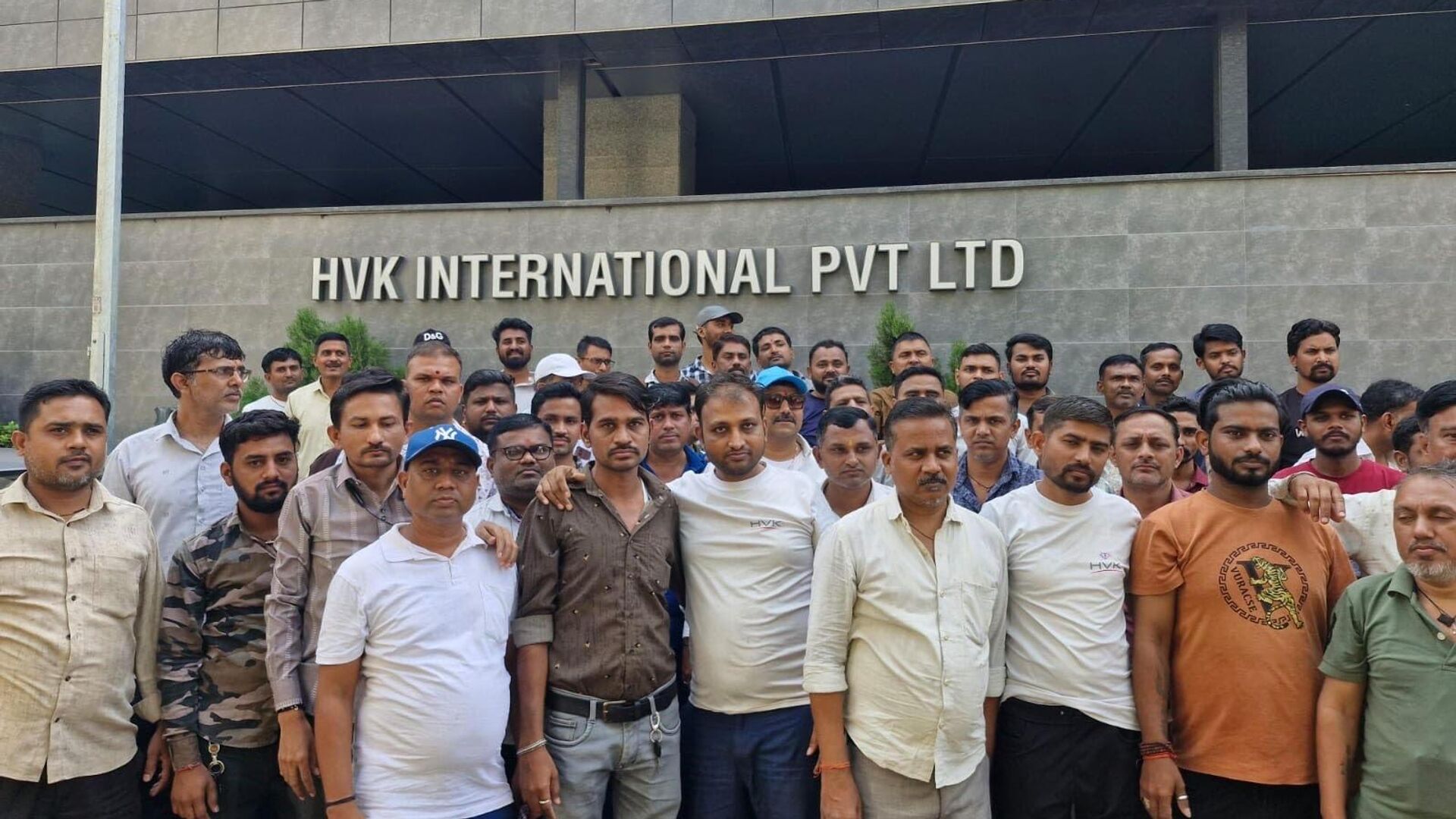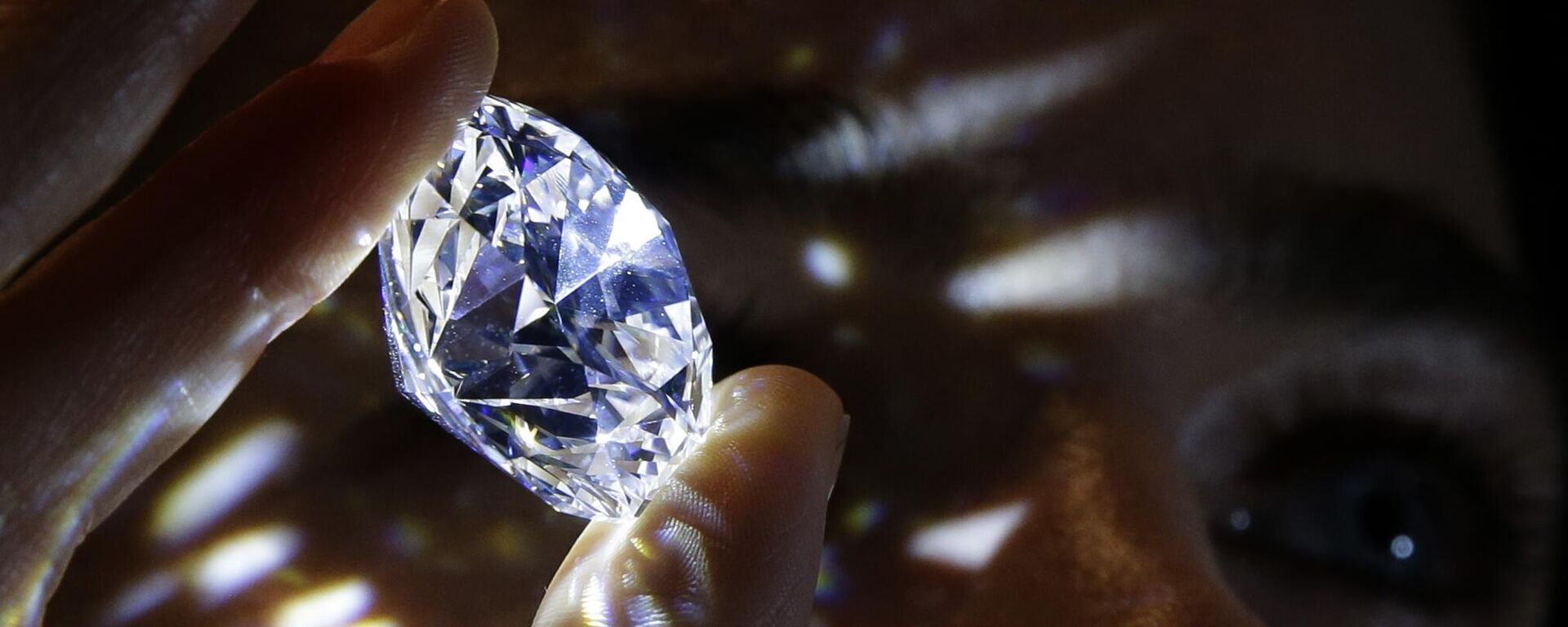Trump's Reciprocal Tariffs Threaten Thousands of Indian Diamond Industry Workers
21:01 17.04.2025 (Updated: 21:31 17.04.2025)

© Sputnik
Subscribe
US President Donald Trump's reciprocal tariffs, which kicked in on 9 April, have created significant concerns in India's gems and jewellery industry. Sputnik India spoke to the most vulnerable low-skilled, daily-wage workers, who are starting at an uncertain future.
Thousands of poor Indian workers in India's thriving gems and jewellery sector face the risk of being rendered unemployed due to US President Donald Trump's reciprocal tariffs, according to various stakeholders.
According to a statement by Ministry of Commerce-backed Gems and Jewellery Export Promotion Council (GJEPC) on Wednesday, India's major key gems and jewellery hubs such as Mumbai, Surat, Noida, and Jaipur are bracing up for possible short-term disruptions and "long-term shifts" due to Trump's tariff action. The GJEPC statement detailed that exports of Indian cut and polished diamonds, gold, silver and other items face a reciprocal tariff ranging from 26-39.5%.
As reported by Sputnik India previously, even before Trump's tariff announcement, the Indian industry was grappling with a slump in demand due to various geopolitical factors, including the G7 pressure to phase out Russian diamonds above 0.5 carat from global supply chains. India has been taking up the concerns of its diamond industry with the G7 counterparts at the highest levels, which include conversations of Prime Minister Narendra Modi, External Affairs Minister (EAM) S Jaishankar and Commerce and Industry Minister Piyush Goyal with their counterparts in Belgium, a global diamond hub. But the pinch of the G7 restrictions have been felt in India, particularly by the not so well-to-do daily wage workers.
According to GJEPC data released this week, India's overall year-on-year (YOY) exports in the sector declined by nearly 12% to $28.5 billion in 2024-25 Financial Year (FY) as compared to previous fiscal. The decline in exports to the US, a major market for India, were witnessed across all major segments - cut and polished diamonds (-16.75%), polished lab-grown diamonds (-9.64%), gold jewellery (-0.11%), silver jewellery (-40.58%) and coloured gemstones (-8.01%). Exports of platinum jewellery bucked the trend, witnessing an yearly rise of 11.79%.
In a statement on Wednesday, GJEPC Chairman Kirit Bhansali also attributed the decline in exports to "geopolitical factors", mainly a slump in demand in the US and China, India's two major export destinations.
Now, with Trump's tariffs taking effect, the woes of India's world-renowned industry have only been compounded further, unless both the nations concluded a bilateral trade agreement (BTA).
Talking to Sputnik India, Bhavesh Tank, the Vice-President of the Diamond Workers Union Gujarat (DWUG), said that the thousands of workers in the diamond supply chains have been facing "recession-like conditions" for the past two years. "The wages have been stagnant and our continued appeals to diamond workshop owners to address the issues have gone unaddressed," Tank stated.
"That's why hundreds of us have decided to go on strike at several units in Surat," Tank said.
The Indian union leader, who has even made a representation to a visiting G7 delegation, said that diamond processing unit owners have blamed a slump in international demand for the stagnant wages. "But, one must understand that the workers are the most vulnerable of the lot, even more affected by employers who have the means to withstand these global disruptions," Tank said. He called on the state and the federal authorities to step in with a relief package for the workers.
Sandeep Rajendra Patil, a protesting diamond worker at HVK International in Surat, told Sputnik India that he was told by employer that the demand for polished diamonds had dropped by almost half in recent months, creating pressure on the owners.
"On average, we have been making around 15.50 INR for every diamond we polish. The rate has been the same since 2015. They increased the rate for us by 1 INR after last Diwali, but again reduced it back to 15.50 INR this year. Our monthly wage works to be around 15,000-20,000 INR ($175-$235). How could one expect to take care of our families in such a scenario?" Patil asked.
"Unless government and industry intervenes with immediate financial relief measures, we would continue to sit on strike," he said.
“This tariff hike affects not just exporters but every link in the manufacturing chain—across SEEPZ, Surat, Noida, Jaipur, and beyond. Thousands of workers are at risk of losing their jobs. We urge both the State and Central Governments to act swiftly. The need of the hour is targeted relief—whether through reverse job work permissions, financial support measures, or policy interventions that help us retain our skilled labour," Bhansali said in a statement on Wednesday.
GJEPC's Vice-President has called on the government to reduce duties on jewellery exports to the US to match those on gold, warning that the Indian industry would be left "paralysed" if that didn't happen.
On Monday, GJEPC office-bearers also met Shaktikanta Das, PM Modi's Principal Secretary, to advocate for the sector’s urgent needs within the proposed India-US trade pact.
"GJEPC has requested (the PMO) the inclusion of diamonds and coloured gemstones in Annexure II of the US Government’s Ad Valorem Reciprocal Tariff Notification. The move aims to safeguard polished diamonds from heightened duties. Additionally, the Council recommends capping total import duties on jewellery entering the US at 10%, inclusive of any ad valorem component," a statement read.
On Thursday, the Ministry of External Affairs (MEA) spokesperson Randhir Jaiswal indicated that the tariff issue will figure in upcoming talks between PM Modi and visiting US Vice-President JD Vance on 21 April in New Delhi.


